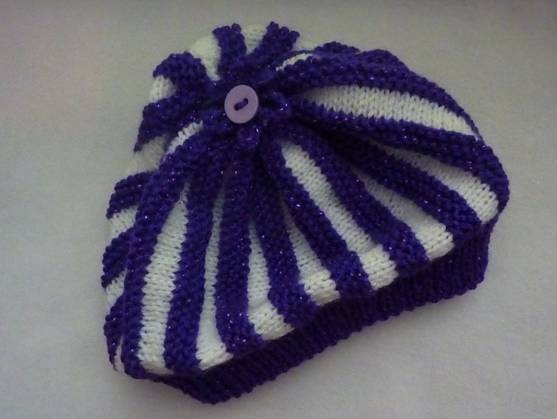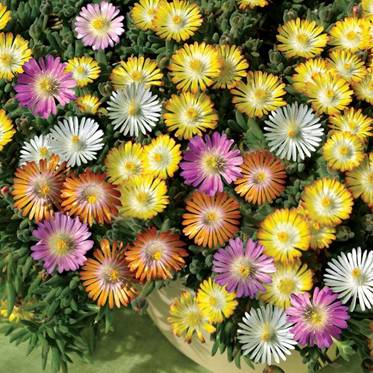
Salty Sam’s Fun Blog for Children
Number 349
Frost
Hello Everyone

Do you have any gardening books that say that you can put a certain plant out in the garden when all danger of frost has passed?
Do you notice how the weather forecaster on the television starts warning you about frost when the autumn comes?
He or she starts telling you about ‘the danger of frost’.
The frost will usually come in the night and although it is very cold it has an affect like burning leaves and plants.
Between winter and summer we have spring, when growth, leaves and flowers spring up (and forth).
The old name for autumn was fall. This is when the leaves fall and so do some of the plants. lt is the first frosts that really complete this process.
Frost is really a coating of ice that forms in damp air conditions.
When you looked at the picture at the top of the post which is of some hoar frost on a tree, you might have thought it was a picture of snow.
lt is spectacular, isn’t it?
Although frost usually comes in the night, if there is any daylight or strong artificial light around when it comes, you can sometimes actually see it falling as a white, fuzzy haze.
lf there is any frost, it will appear on the grass, if nowhere else.
Frost forms when the air temperature falls below the freezing point of water.
Frost damage occurs on a plant, when the water in the cells becomes frozen. The plants will not recover from this and become brown and shrivelled. You may have notice this happen to magnolia blossom in the spring.
lf frost falls in milder climates, it commonly appears like fragile white crystals or frozen dew drops. But in the colder climates of the world it has a greater variety of forms.
Hoar frost is really spectacular because you will see huge needle-like crystals of ice covering every fine branch, leaf, wire, spider’s web and surface. (The crystals are so big they look like feathers or fur!) This happens when ice deposits onto these surfaces from cold air with low humidity. That means that the air is quite dry.
The word ‘hoar’ comes from an English adjective that refers to old age.
All things outside look like they have grown white hair!
You can get hoar frost in a freezer that has not been defrosted for a while.
Rime on the other hand, forms in super-cooled wet conditions.
Technically speaking it is not really a frost. lt is a deposit of solid ice that often occurs quite quickly in wet air and windy conditions. Ships crossing arctic seas accumulate large quantities of rime in rigging and on every other surface above deck.
l remember it well!
Window frost forms on glass and can create very pretty patterns.
You won’t like it though if you go out to drive your car in the morning and your windscreen is so covered in frost you can’t see where you are going.
Drivers have to start scraping the ice off with a scraper – or if they thought ahead they will have put a cover on the windscreen the night before to stop the frost forming in the first place.
You might notice as you drive along on a frosty morning that the sunlight will melt frost on cars, and the ones parked in the shade will be the last lose their white coating.
Black ice is dangerous because it is not always visible. When you cannot see that a surface will be very slippery to walk on or drive on, you will have no warning.
Black frost is not really a frost because it refers to the freezing of water inside plants causing them to blacken and die. lt is bad news for farmers if they lose their crop under these weather conditions.
Perennial plants may lose leaves to frost, but they will recover in the spring with new leaves. Some plants can survive frost and others can’t.
Frost can be damaging in other ways.
Water has a 9% expansion from water to ice, and when water gets into the crevices in rocks, it can split them open.
The size of ice crystal you see when you wake up in the morning will depend on the amount of moisture in the air that could be drawn upon and also how long the crystals have been growing for over night. The crystals will form on objects away from the direction of the wind, if there is any wind.
Frost crystals look translucent (clear) or white because, like snow, in a mass of frost, light will scatter in all directions. This gives frost the appearance of being white.
Frost can sometimes be more damaging than snow. Snow can have an insulating property but frost does not.
Some of your plants will have to be put in a heated greenhouse to survive the winter, and others will manage in a frost-free, unheated greenhouse.
When plants are really big and can’t be moved, even with the help of a wheel barrow, gardeners can wrap them in something called agricultural or horticultural fleece, or pack some good, old-fashioned straw around them to create cover and insulation. ln this way, tropical and sub-tropical plants can be grow in British gardens.
We never know whether we are going to have a mild winter or wet or snowy one.
You may only have to wrap your plants up during the middle of a bleak winter or you might choose to stay on the safe side and wrap them up well before the first frosts appear – usually about October time.
But you only have to take a look at the Picture Gallery this week to see how beautiful frost can be in spite of all the work you have to do to keep yourself and your property warm enough to be protected from it.
Bye bye everyone – don’t forget to subscribe to my blog!
lf you like my blog, please support it by telling all your friends and followers about it.
Thank you!
And see you again next Fun Friday!
Love and kisses
Salty Sam

www.christina-sinclair.com


Bill and Bob’s Joke of the Week![]()
![]()
Bill: How do you make anti-freeze?
Bob: l don’t know. How do you make anti-freeze?
Bill: Send her to the North Pole!
Auntie Alice: l heard that!

Salty Sam © Christina Sinclair 2015
Unauthorized use and/or duplication of material from this blog without express and written permission from this blog’s author and owner is strictly prohibited.
Links may be used to www.christina-sinclair.com

Picture Gallery
 Hoar frost
Hoar frost
 Hoar frost
Hoar frost
(500px.com)
 Window frost
Window frost


 THE SALTY SAM NEWS DESK
THE SALTY SAM NEWS DESK

Talking about my auntie – my Auntie Alice roped me into helping her out this week – last Saturday to be precise.
There were a lot of shoe boxes piled up in the vicarage that needed to be wrapped up in pretty paper before they could be labelled up and packed with presents.
I told you about her shoe boxes for orphans’ scheme in Blog Post 344, if you remember.
She had also roped in the vicar and Captain Jack.
I am not sure we were the best people for the job because we kept sticky-taping our fingers together!
Anyway, we did our best.
Little Emily desperately wanted to help so we employed her as the ‘manager’ of the project. Well, that’s what we told her she was anyway.
She took unwrapped boxes from a pile and brought each one to the table.
We didn’t want them to pile up too much on the table because we needed space to lay out the sheets of wrapping paper.
She took the wrapped boxes from the table and put them in a different pile.
She also replenished the sticky tape dispensers with new rolls of sticky tape and brought us glasses of water.
She even made some cheese sandwiches for our lunch and cut up the apple cake that Auntie Alice had brought with her and put the slices onto plates.
Auntie Alice had labels already written out and Emily stuck them on the ends as we finished wrapping each box.
The age categories we used were: 2-4, 5-7, 8-10, 11-14 and boy or girl had to be written on the label as well.
In fact, Emily was really quite a help. She kept the production line going.
Auntie Alice was there early and had brought all the materials we needed.
She was faster than any of us at wrapping the boxes – I think she has hands that are used to working with fiddly projects.
We had to wrap the bases of the boxes and the box lids separately and then secure the two together with large elastic bands.
We worked all day as there were many boxes to fill.
But we did a good job of it and got everything finished – which is just as well because all the boxes have to be ready to be taken off in a big lorry quite soon.
By the end of Saturday we were all quite tired and I took Emily home.
Emily is of the opinion that it can never be too early to start making things for Christmas anyway, but after all her efforts in the vicarage she was in the mood to go home and start her own preparations for Christmas.
She has decided that she is going to make her own hand-made greetings cards to send to all of her friends.
First, she made a list of all the people she was going to send cards to.
Then she knew how many sheets of white card she would need to buy in order to make her greetings cards.
Her design was going to be very simple.
On one half of the card – the right side – she drew a picture of a winter tree.
Then she dabbed little blobs of glue onto the branches of the tree and streaked the glue across the bottom of the picture in lines.
Her mum made sure that she had put down lots of newspaper and was working on a tray before she started working with the glitter.
The design was simple and effective and really something that anyone can do.
Emily was able to write her own message in the cards which meant they were really personalized.
Emily’s cards turned out really well!
She is also going to put some of them into the boxes with the presents.
Auntie Alice said that some of the children getting a box of presents might have never been given a present before in their whole life.
I think they will be happy to get our boxes.


*********************
TO ADVERTISE ON THIS BLOG
PLEASE CONTACT:
christina.sinclair.ads@aol.co.uk
*********************


Quick Quiz
These are words can you add to ‘ice’ to make other words.
What are they?
- c _ y _ t _ l _
- r _ n _
- s _ a _ e _
- b _ r _
- c _ e _ m
- h _ u _ e
- p _ a _ t




lt’s the Weekend!

HOW TO MAKE A SPARKLY STRlPY HAT
There are two sizes of hat here for people for quite little heads and even littler heads.
The hat is done in purple and white stripes so the stripes have a large contrast but would look quite different done in different colour choices.
You could make the hat in just one colour because the texture of the stripes will show in the knitting.
You could even make the purple stripes in different rainbow colours instead.
HAT FOR LARGE CHILD – TOP (KNIT ONE)
Using 4mm knitting needles and purple sparkly dk yarn cast on 30 stitches
Knit 6 rows of garter stitch
Change to white dk yarn
Knit 4 rows of stocking stitch
Repeat these 10 rows 17 times
Cast off
HAT FOR LARGE CHILD – RIBBING (KNIT TWO)
Using 3¾mm knitting needles and purple sparkly dk yarn cast on 56 stitches
K2 (p1, k1) repeat the last 2 stitches until you have 2 stitches left on the needle p2
Repeat the last row 11 times (12 rows of 1 x 1 rib)
Cast off (rib-wise if you can but don’t worry if it if too fiddly for you)

HAT FOR SMALL CHILD – TOP (KNIT ONE)
Using 4mm knitting needles and purple sparkly dk yarn cast on 25 stitches
Knit 6 rows of garter stitch
Change to white dk yarn
Knit 4 rows of stocking stitch
Repeat these 10 rows 14 times
Cast off
HAT FOR SMALL CHILD – RIBBING (KNIT TWO)
Using 3¾mm knitting needles and purple sparkly dk yarn cast on 46 stitches
K2 (p1, k1) repeat the last 2 stitches until you have 2 stitches left on the needle p2
Repeat the last row 9 times (10 rows of 1 x 1 rib)
Cast off (rib-wise if you can but don’t worry if it is too fiddly for you)
TO MAKE UP
- Making sure that you have your ribbing the right way up sew the side seams right sides together using over-sew stitching
- Sew the back seam of the top of the hat with right sides together using over-sew stitching
- Fold the top of the hat so that you know where your centre back and centre front lines are and then ease the ribbing into position – you can pin it in place before you sew it on if that will help you
- Make sure that you are sewing right sides together before you start and sew the ribbing onto the top using over-sew stitching – you should have the side seams of the ribbing at the side of the hat and the seam of the top part at the back of the hat
- Then weave a length of yarn along the top edge of the hat and pull the top into a tight circle
- Sew a very large button to the crown of the hat in order to neaten the edges and make a nice finish – if you prefer you can use a crocheted flower instead like the hat in the photograph
To make the flower crochet 60 chains into a length of yarn and pull your chains into six petals then sew a button to the top of the flower and take the yarn underneath to use to sew the button onto the hat.

Please note that the material on this blog is for personal use and for use in classrooms only.
It is a copyright infringement and, therefore, illegal under international law to sell items made with these patterns.
Use of the toys and projects is at your own risk.
©Christina Sinclair Designs 2015


Quick Quiz Answers
- crystals
- rink – a sheet of ice for people to skate on
- skates – boots with blades for skating
- berg – lump of ice broken off from a glacier (a glacier is a river of ice)
- cream – delicious food
- house – a small building used to store ice through the summer before fridges were invented
- plant – stonecrop – a kind of sedum

lce plant
Have a look at these pictures on my Pinboard
to see how stunning frost and ice can be!
https://www.pinterest.co.uk/TheSaltySamBlog/wild-weather/


